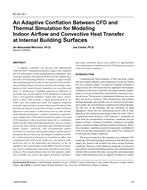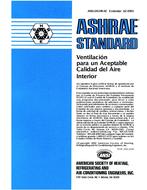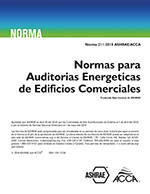Description
A adaptive controller was devised and implemented within the ESP-r simulation program to support the conflation of CFD with dynamic whole building thermal simulation. This controller manages all interactions between the coupled thermal and CFD modeling domains. It employs a quasi-steady-state modeling approach, wherein the separate CFD and thermal modeling domains operate in tandem and exchange information at their model domain boundaries on a per-time-step basis. A “double-pass†modeling approach is employed. At each time-step, an investigative CFD simulation is performed with a zero-equation turbulence model and coarse convergence criteria. This provides a rapid approximation of the room’s flow and temperature field. The adaptive conflation controller appraises these results to determine the nature of the flow (forced, buoyant, mixed, fully turbulent, weakly turbulent) adjacent to each surface. It then selects from its suite of near-wall methods and boundary condition treatments to appropriately configure the CFD model for each room surface. A second CFD simulation is then performed using the k-e turbulence model with this refined modeling approach to more accurately resolve the room’s airflow and temperature distribution and to predict surface convection. The CFD-predicted surface convection is returned to the thermal domain, and the process repeated at the next time-step. The adaptive conflation controller is demonstrated in this paper by modeling an office zone conditioned with a VAV system. In this case, air motion is influenced not only by the momentum and buoyancy of the air supplied to the room through a grille diffuser but also by buoyancy forces resulting from solar gains absorbed on the room’s surfaces. This example demonstrates how the adaptive conflation controller can resolve the impact of realistic (dynamic) operating conditions upon room airflow by appropriately selecting boundary conditions for the CFD domain in response to the local flow conditions.
Units: SI
Citation: Symposium, ASHRAE Transactions, vol. 109, pt. 2, Kansas City, 2003
Product Details
- Published:
- 2003
- Number of Pages:
- 14
- File Size:
- 1 file , 760 KB
- Product Code(s):
- D-20881




